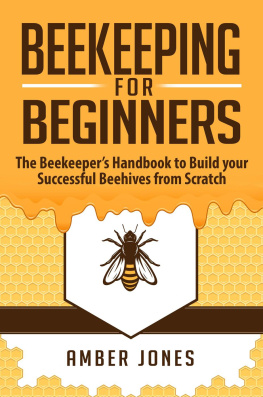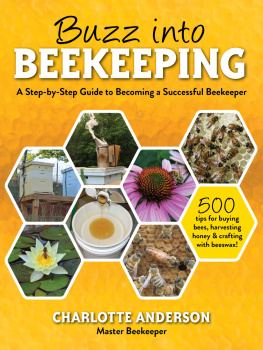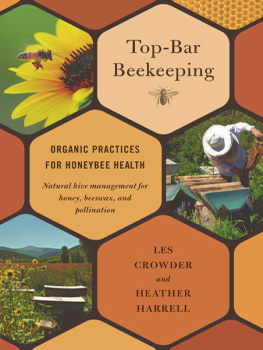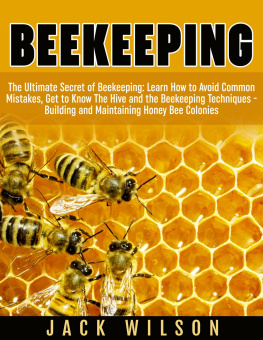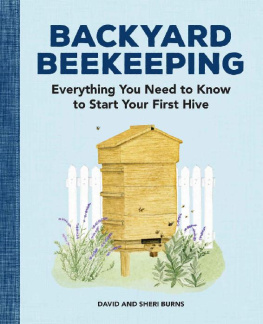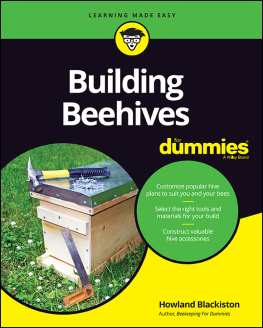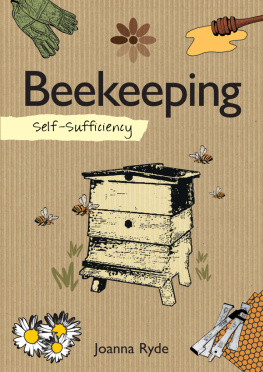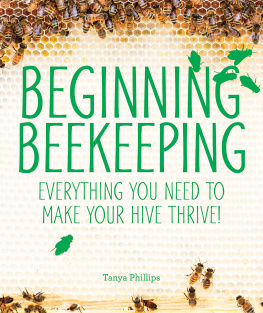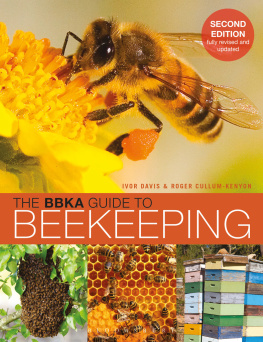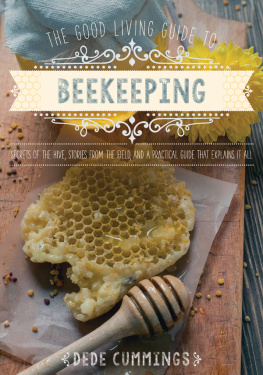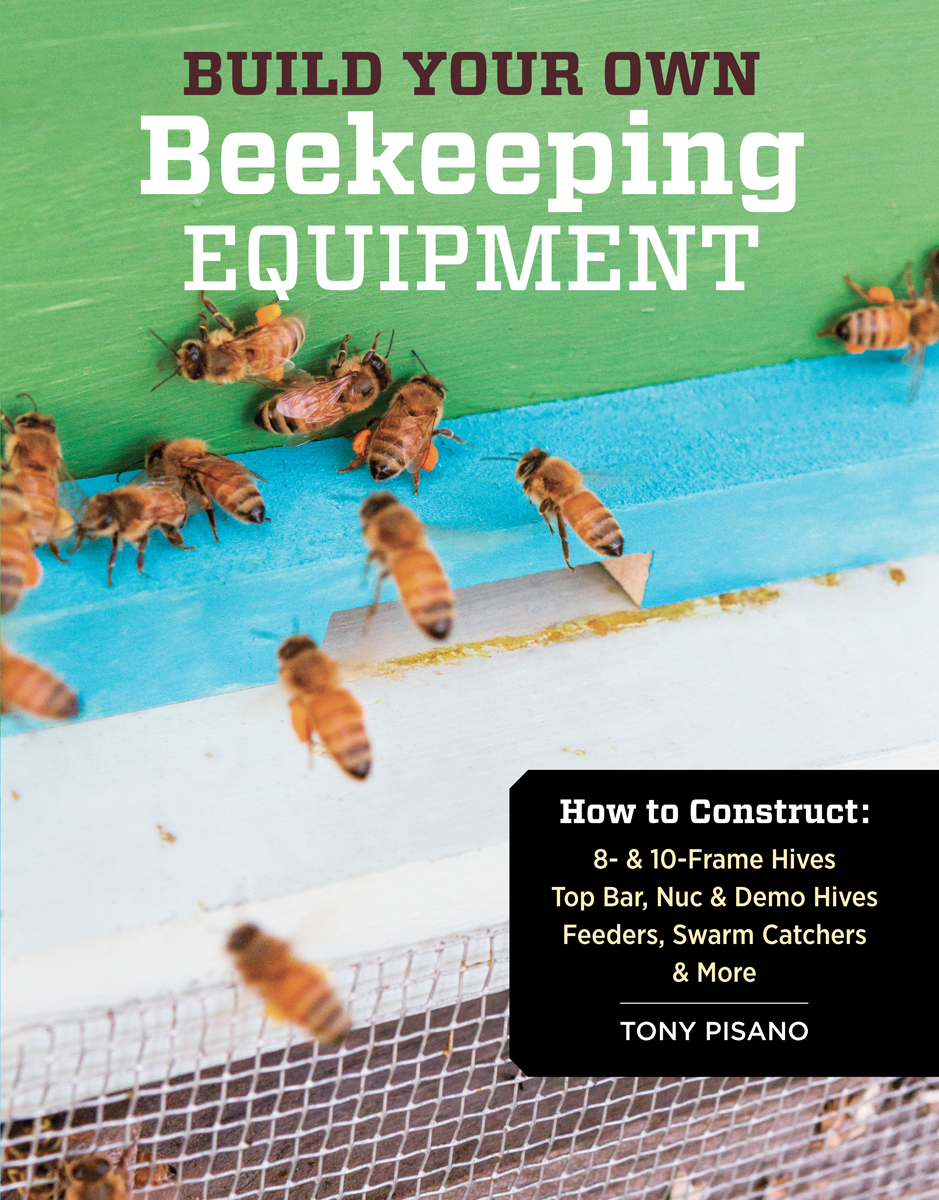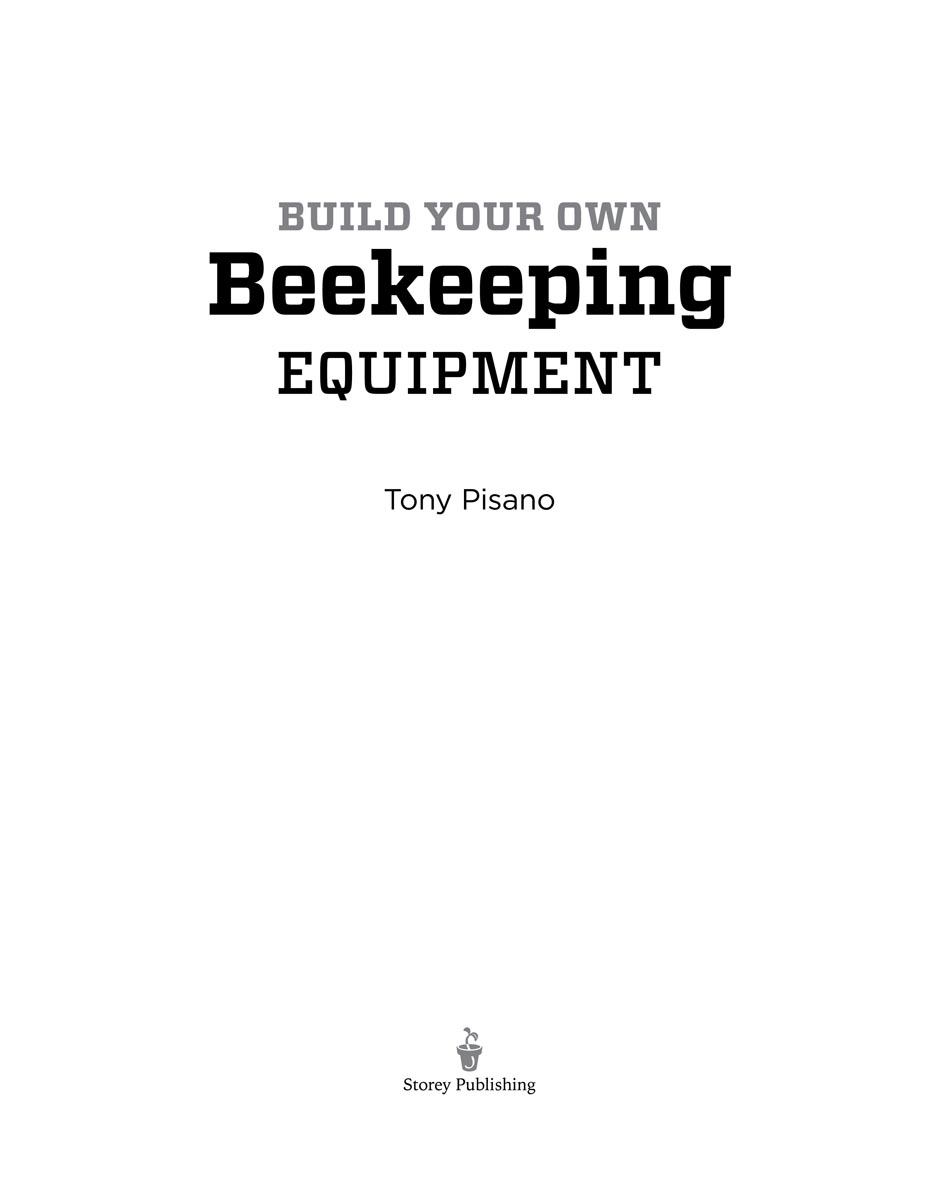I dedicate this book to my wonderful wife, Leila, a creative and kindred spirit who loves to make things with her own hands.
To my son, Joshua, who spent many hot summer days helping put up electric fences, chasing bears away, and lifting equipment as we checked the hives, and who hand-cranked literally hundreds and hundreds of pounds of honey through the extractor before we put a motor on it.
To my daughter, Mackenzie, my biggest cheerleader, who has always had faith in my abilities and has encouraged me all the way, even though she is terribly afraid of bees.
Finally, to all people young and old who want to feel a direct connection to the land and the joy of making something with their own two hands.
Contents
Acknowledgments
This book would never have been possible without the help of many people, and Id like to give them thanks.
First of all, to my dear friend Paul Dugal, Sr., who sparked my interest and got me started in this crazy business of keeping honey bees. When I was just observing from a safe distance, he gave me his extra veil and got me up close. Weve spent many hours sipping coffee, planning strategies, smoking the hives, and taking trips to Betterbee.
Thanks to my beekeeping buddies Lloyd Vosburgh and Jeff Burdick. They enthusiastically share their years of knowledge and experience. Lloyd and Jeff are everyones go-to beekeepers when they have a question or a problem or need a queen or frame or brood. Thanks to Tom Stefanik, who has a great love for bees and people and has done a lot to help promote our club, the Northern Berkshire Beekeepers Association, and beekeeping in general.
Thanks to Doone Mackay, my musical partner, who shared her plan for the double hive stand.
Id also like to thank Deb Burns, Alethea Morrison, and Becca Bradburd, who all convinced me that I could write this book in the first place, and everyone who works behind the scenes at Storey Publishing to organize a pile of papers, sketches, and pictures into something presentable.
I should also mention Anne Frey and the members of the Southern Adirondack Beekeepers Association, Dan Conlon and members of the Massachusetts Beekeepers, and the crew at Betterbee in Greenwich, New York, who all put on annual conferences or field days for beginners and experienced beekeepers. I also have to acknowledge Mike Palmer, Dewey Caron, Ross Conrad, and countless others who are willing to speak to the many beekeeping clubs, large and small, around the country.
Preface
Beekeeping is a fascinating adventure, whether you have one hive in the backyard to help pollinate your garden and supply a little honey to family and friends, or enough hives to produce honey for sale at your local farmers market or co-op.
When I decided to get honey bees after a season of observing and helping my friend Paul Dugal, I jumped right in with both feet and really wanted to be immersed in the process. I ordered five packages of bees from Betterbee, in Greenwich, New York. I cut, ground, and filed an old lawnmower blade into a hooked hive tool. I scavenged the local landfill for cans to build a homemade smoker, and I built two complete hives plus most of the parts for the other three, minus the frames.
Bear in mind that everything didnt come out perfect. My boxes were a little too wide and the bees attached some extra comb to the sides. The spring I used for the smoker bellows was a little weak, and the nozzle was made from copper pipe fittings, so it didnt puff out clouds of smoke like the fancy store-bought models.
That didnt matter. What mattered was that I made them with my own hands, and they worked. At the end of the season, which, as beginners luck would have it, was a banner year, I extracted 400 pounds of honey from those five hives! I will never forget it.
Why should you build your own beekeeping equipment? The sheer pleasure of doing it yourself is reason enough. Continuing the tradition of people working with their hands and solving their own problems is another good one. By the time you are finished, you will have a much better understanding of the parts that make up a hive, how they are constructed, and how they all work together as a unit. You can find and use sources of scrap wood that will save you money and keep stuff out of the landfill. I guess a harder question to answer would be: Why not?
Most of the projects presented here have detailed step-by-step instructions to ensure your success on the first try. Ive done my best to get things right by building each item in the shop, taking down notes and making sketches, writing up a plan, then going back into the workshop and using these instructions to build it again and tweak if needed. The projects are all centered on the table saw as the main power tool. I will assume that you have the basic skills needed to operate one, or know someone who does. (The saw operations in this book are very standard and straightforward, so if you need to ask a friend or neighbor with a saw to make some cuts, you wont owe him or her too much beer... or honey.) With this and a small variety of other tools, you can build every project shown here. And if you dont have access to a table saw, you can substitute with portable saws and a router.
The chapters are arranged somewhat in order from the bottom of the hive up to the outer cover. There is a separate section on building 8-frame hives. Go in order from beginning to end or jump around; the choice is yours. You can browse the book and start with the simplest projects first, like a hive spacer or entrance reducer, and work your way through the harder ones as you gain confidence and skills. None of the projects are all that hard, and once you learn to make the basic cuts youll feel like a pro.
This book is not meant to be the last word on building beekeeping equipment. If it were, then I would have failed miserably. What it will do is show you how to build entire 8-frame and 10-frame hives (in traditional Langstroth style) that will be ready for frames and bees, as well as a top bar hive (if you want to keep things basic), and many other projects that make beekeeping easier. Hopefully the book also will spark your own imagination and creativity. By all means, use it as a reference and a starting point. Make changes and improvements to the projects in these pages, and share them with others. Come up with totally new ideas. Thats how we make progress.
Whatever you do, dont just sit on the couch and read through these pages. I want you to anticipate the smell of fresh-cut pine, the sound of a hammer driving home a nail, and the sight of a beehive as it materializes right before your eyes in your own shop. Lay the book on your workbench, crease the pages, and get them dirty. Put on your safety glasses and measure and mark. Flip a switch and listen to your table saw sing. You will be all the happier for it, and so will your bees.
Chapter One
Before We Begin
Being prepared is important for building a successful project. This means having a safe work area, using safe methods and the proper tools, and having the materials you need on hand. If you read more than once that safety is first and foremost, its because it cant be stressed enough. This chapter is a rundown of all the tools and materials used for the projects that follow. The project instructions are written for those with a basic level of knowledge about working with wood. If your experience is less than basic, so to speak, see Getting Help on for some ideas on places to start.


